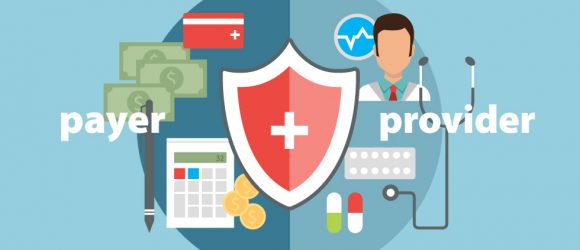3 Content Marketing Tips for Payvider Health Plans
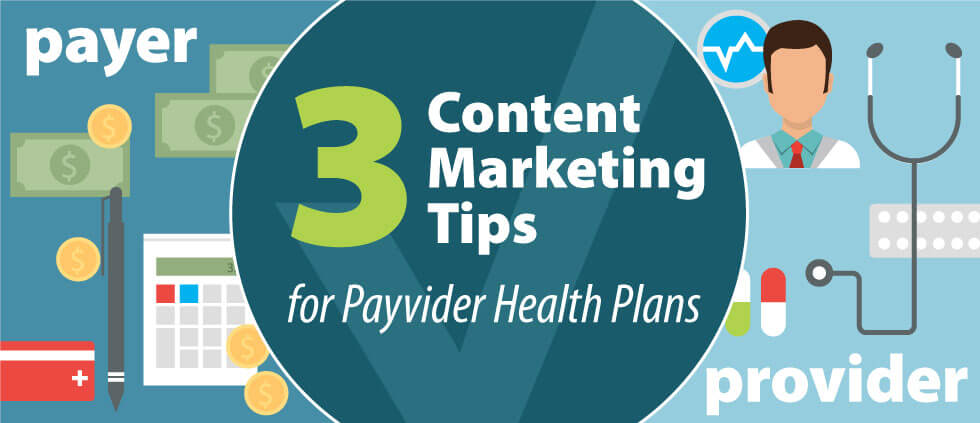
The convergence of payers with hospital and health systems has led to the growing importance of provider-led health plans, more commonly known as payviders. Earlier this year, we talked about the payvider trend – why it is surging and what it means. At Media Logic, we work closely with payvider health plans to help them effectively reach current and prospective members. The Social Content Marketing Team has found that the payer/provider relationship provides unique opportunities for healthcare content marketers to create and share interesting, useful content to reach your target audiences online. Here are a few tips based on our team’s experience.
1. Use partner/parent health system content to boost your social media streams.
One of the simplest things you can do is share content from your partner hospital to your health plan’s social media streams to help boost your content mix. Ideas include:
- Podcasts relevant to your health plan’s target audience
- Upcoming events in your community hosted or co-hosted by your plan and the health system including health and wellness lectures, classes and support groups
- Live video streams
- Articles written by health system experts
We do this quite often with Aspire Health Plan (client), a Medicare Advantage plan based in Monterey County, California, owned by two local health systems – Montage Health and Salinas Valley Memorial Healthcare System. Content created and vetted by a health system is usually medically accurate and localized to your target audience, and its important information from a trusted local source about relevant health and wellness topics. This was especially important during the COVID-19 pandemic where people wanted to see timely content relevant to them. See the example below from Banner|Aetna, a joint venture between Phoenix, Arizona-based Banner Health and Aetna.
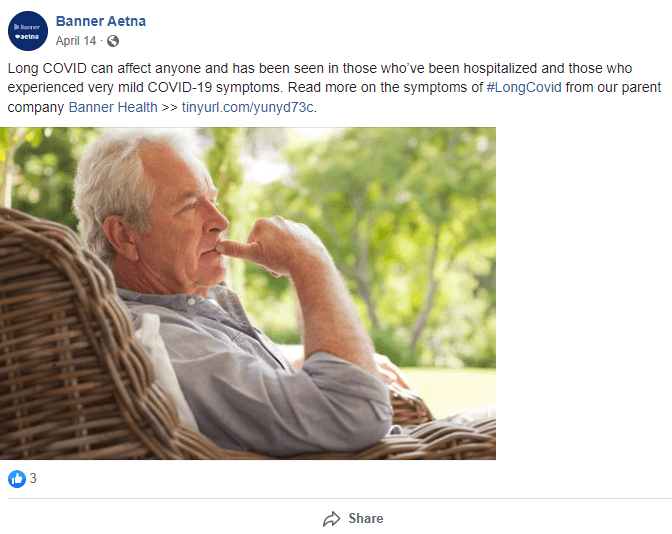
To take it a step further, you can coordinate with the social media and content marketing teams at the health system and ask them to share your content to their audiences and establish a reciprocal relationship.
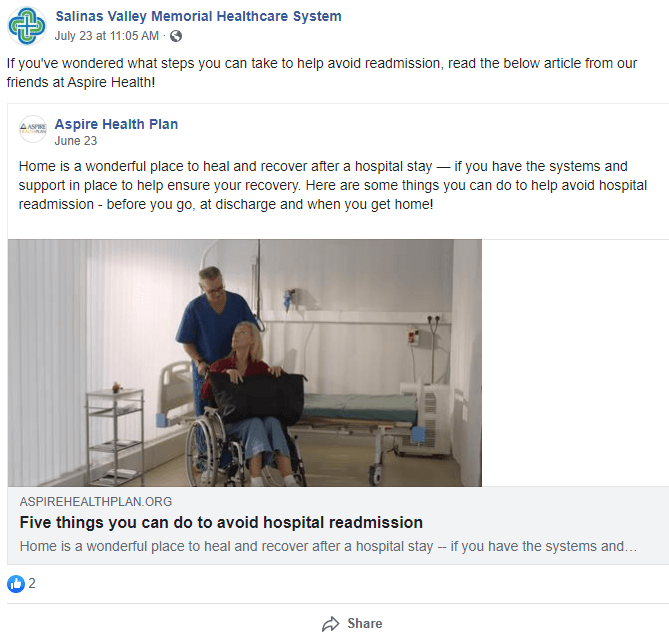
2. Tap providers as subject matter experts (SME) and faces for your own content marketing channels.
Having a relationship with a provider or health system means having access to their knowledge and medical expertise including clinicians, nurses and other allied health professionals. These individuals are great assets for helping you create different types of content including:
- Blog content: SMEs can assist with guest authoring, providing quotes or reviewing medical information. For example, Geisinger Health Plan uses medical experts and healthcare professionals from Geisinger Health System to add expertise and authority to their Healthy Living blog.
- Podcasts: Providers can be involved as hosts or guests. For example, UPMC Health Plans recently launched Health Break, a podcast for their members that explores important and interesting health, wellness and productivity topics in five-minute episodes. Another UPMC podcast, HealthBeat, is led by the payers’ medical experts.
- Social media posts: Ask your SMEs to provide quotes and testimonials, which help add a human face to your organization. For example, UPMC Health Plans does regular spotlights of their health coaches and shares them on Instagram.
- Video content: Featuring providers in short videos for social media can also add a human face to your organization. (We’ve previously shared the importance of video content for social media and have a few ideas for inspiration.)
3. Tell a story about how the payer/provider partnership can help members and prospects in your community.
One of the strengths of content marketing is that it allows your health plan to tell a story. Storytelling allows you to truly connect with members and prospective members to appeal to their emotional and human side. This helps complement direct marketing messaging which explains tactically why your plan is great. You can tell these stories through blog posts, videos and social media posts.
Storytelling was our goal in our work with Aspire Health Plan. A heartwarming relationship between an Aspire Health coach and a Medicare Advantage plan member helped the member overcome feelings of depression and recover from heart surgery. We told the story through a blog post and shared the client’s video, below, on their social media streams.
In addition, you can also highlight how strategic relationships between payviders and other healthcare organizations can help make members healthier. In the example below, Banner|Aetna shares a success story about how their collaborative relationship with type 2 diabetes reversal leader Virta Health led to a positive outcome for one of their members.
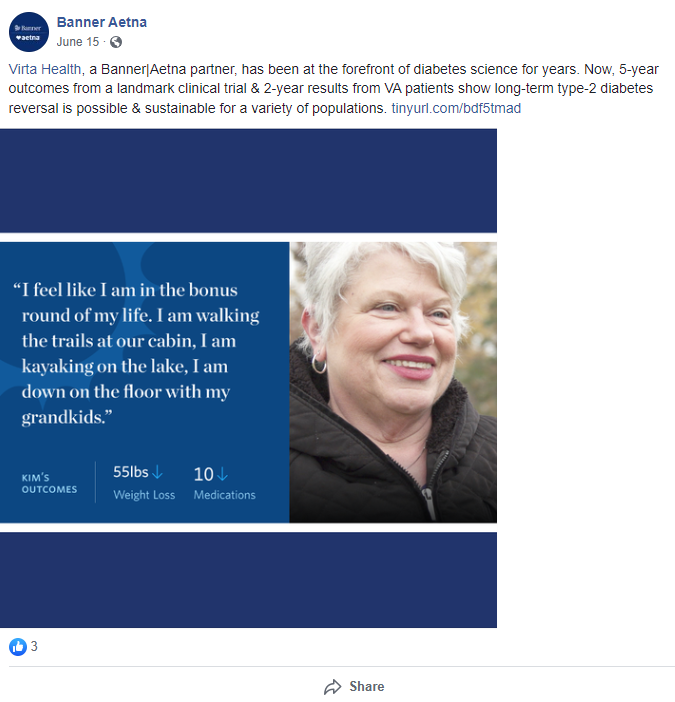
There are many ways to highlight the strengths of a payer/provider relationship in your healthcare content marketing strategy. A lot of these ideas can be incorporated, in general, for any health plan. Check back with us in the future as we continue to dive more into payviders and share our thoughts, expertise and experiences as healthcare marketers.





